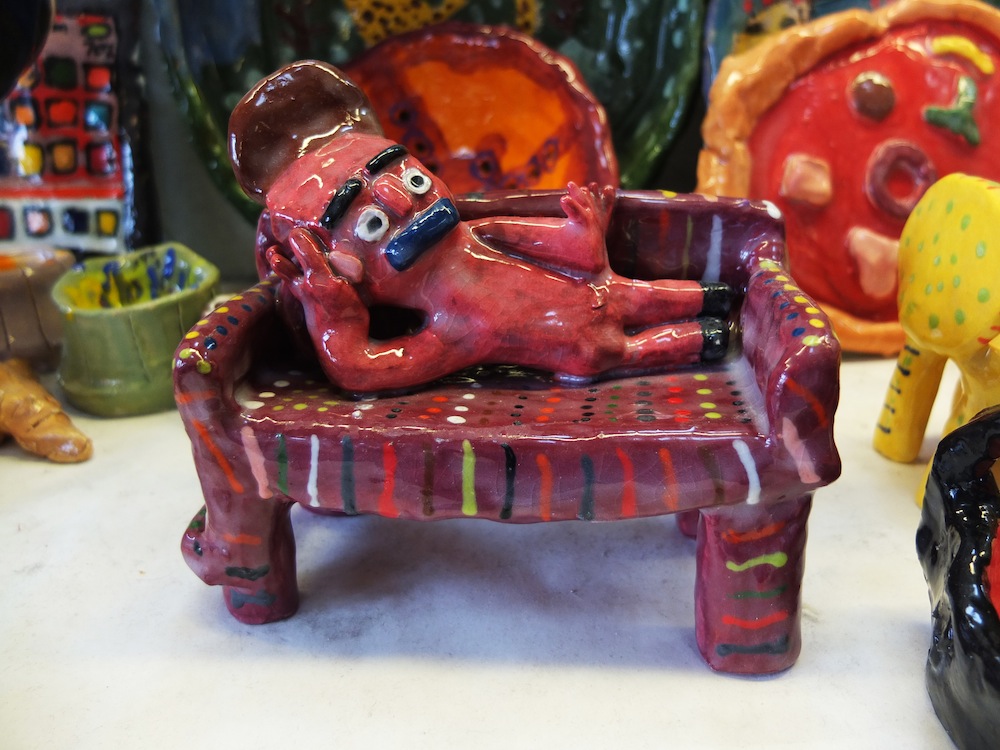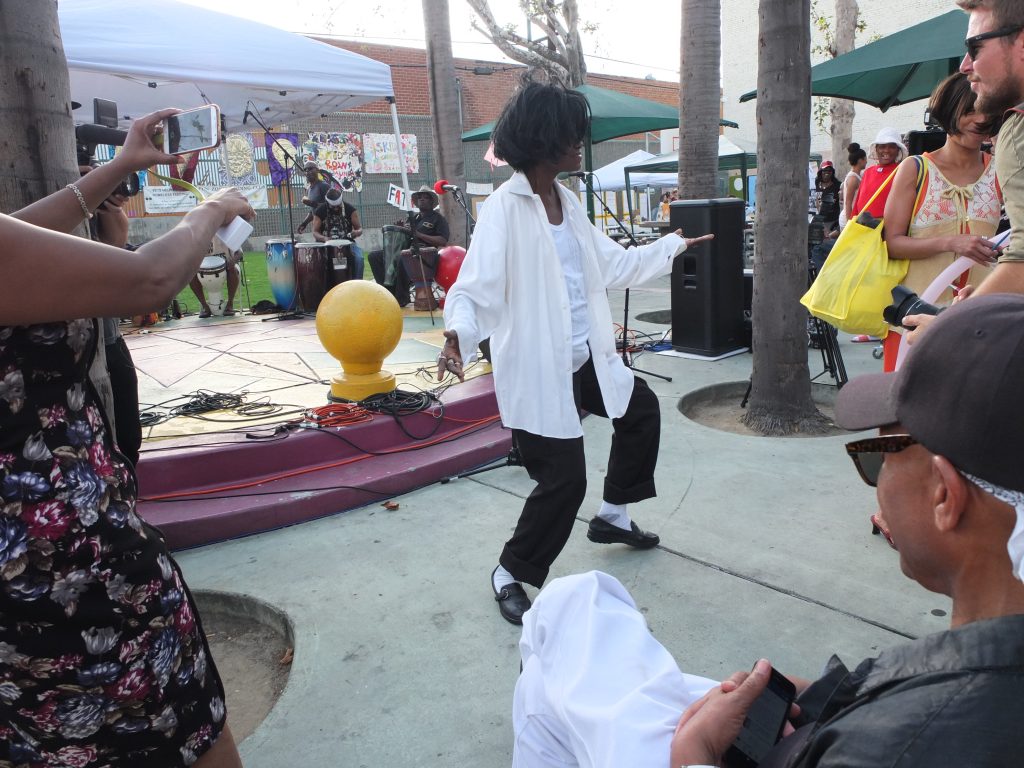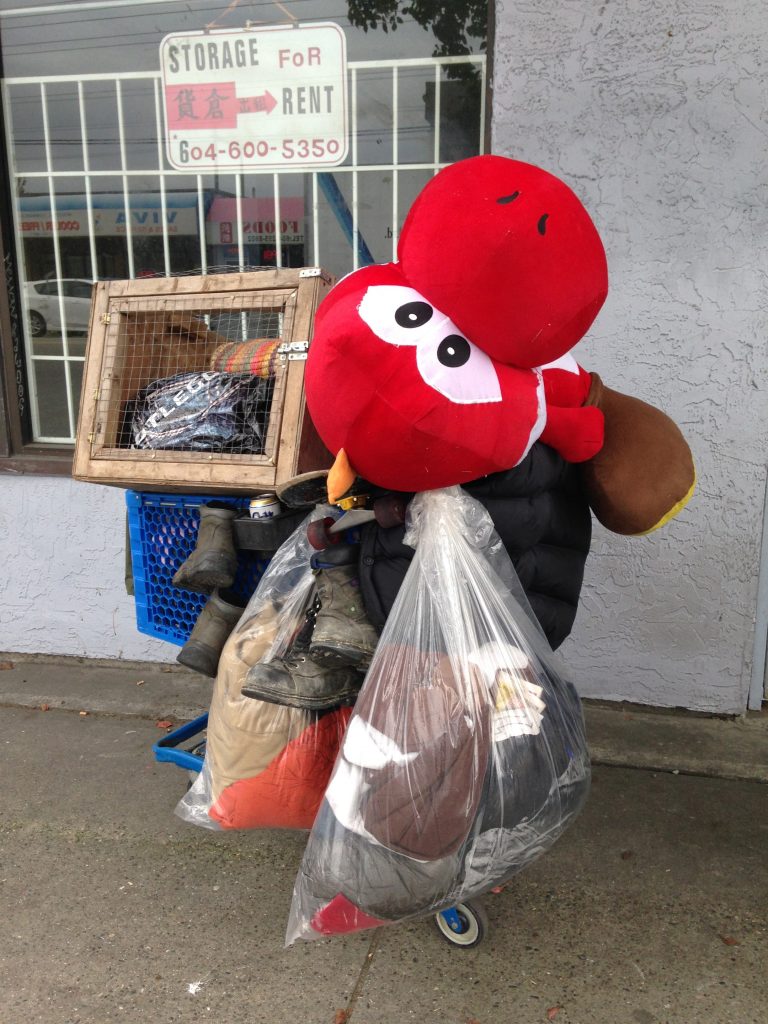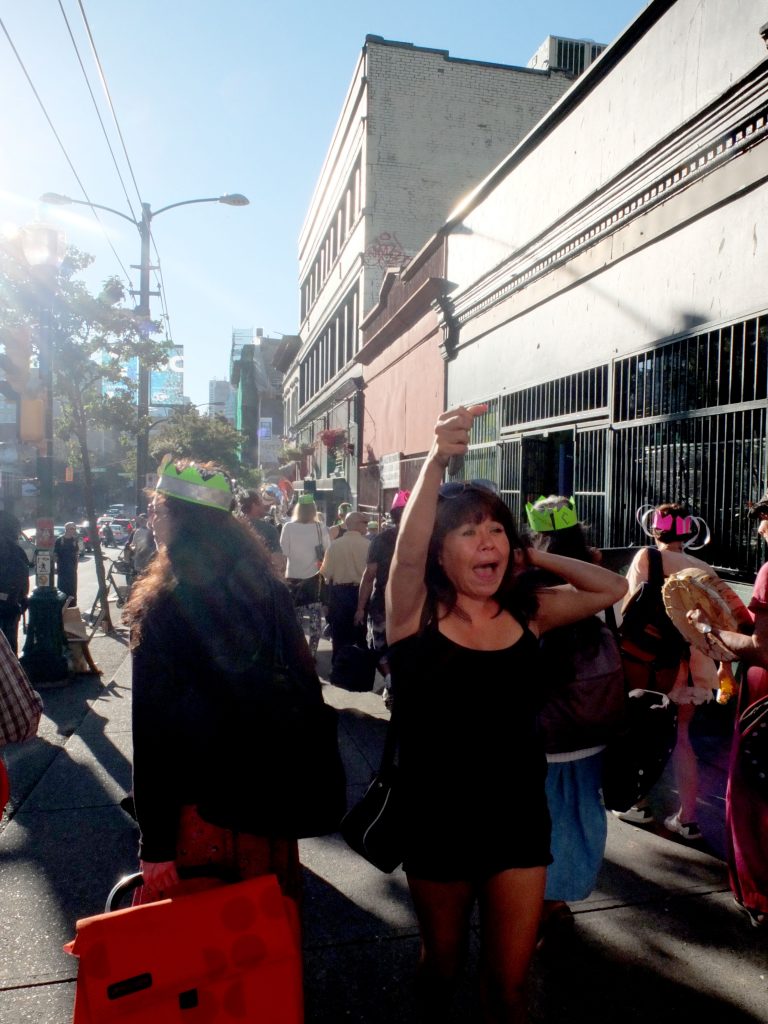About Project
“Self expression is a basic human right”
– Amy Taub, Executive Director at Creativity Explored

Ceramic sculpture by Lulu Sotello. Image courtesy of Creative Growth
This Winston Churchill Travelling Fellowship report examines the original ideas and strategies that I identified at six organisations in the U.S and Canada that offer regular space, facilities, opportunities and support to a range of artists who are experiencing homelessness, have mental health issues or developmental disabilities. I look at the most distinctive aspects of these programmes, aiming to share my findings with others working in the field of open-access, supported art programming. In particular, I was interested to uncover what needs to be put into place in order to support artists becoming involved in contemporary art and then go on to develop their practice within a supportive working environment.
In a recent report by the Warwick Commission which examined diversity and participation within the cultural sector in the UK, it was unsurprisingly revealed that the “wealthiest, better educated and least ethnically diverse 8% of the population forms the most culturally active segment of all”. Far from being something that is often seen as almost a luxury for the lucky few, this research reveals the numerous ways in which art can be an invaluable, effective tool for building self-esteem, a sense of purpose and, perhaps most significantly, creating a community for members of society who regularly face isolation, marginalisation, stigma and trauma.
For some participants, the projects that I observed gave them time in their week where they were able to truly be themselves; a space where they were free to communicate life experiences, explore their identity or use their art as a voice for political advocacy.

Jo Clark performs at The Festival For All Skid Row Artists
At the outset, it is important to iterate that the projects should not be viewed simply as ‘art therapy courses’. What they in fact foster is closer to a higher arts educational environment, with the organisers and staff members often coming from a fine art background rather than medicine.

Brown Carrots by Evelyn Reyes, oil pastel on paper, 2009, courtesy of Creativity Explored
In recent years, contemporary art in the UK and further afield has focused on developing programmes to include a wider, more diverse range of artists and audiences. This awareness to tackle a lack of diversity within the arts has coincided with a rise in recognition for ‘outsider’ art within the ‘insider’ art world. That in turn has fuelled a growing and competitive market that has led to events such as the Outsider Art Fair becoming embedded within the ‘insider’ cultural calendar. Yet perhaps the most significant progress that has come out of this shift is the development of existing and new supported programmes that provide platforms and opportunities for artists, who are homeless, have mental health issues or developmental disabilities, to develop their practice within professional working environments.
“It is important that an institution like the Royal Academy is doing something like this because…often [the art world] is out of their reach, often it might be a place where they feel intimidated to come to, don’t feel accepted, perhaps looked at in a judgemental way, whereas we invite them in.”
– Becky Jelly, one of the founders of the Royal Academy’s Art Club, a project that invites homeless artists living in London to attend a monthly studio session that centres around the RA exhibition programme.
The UK has a longstanding reputation for excellence in this field, with a number of projects having successfully developed leading practices and innovative techniques for improving the art and lives of participants, (for example Project Ability (Glasgow), Venture Arts (Manchester), Celf o Gwmpas (Wales), ActionSpace (London), Outside In (Chichester), Art Club at the Royal Academy (London), The Museum of Homelessness (London), The One Festival of Homeless Arts (London).)
While I was fortunate enough to have spent several of my formative years working and learning in this environment in the UK, I chose to travel to North America to widen the scope of my research and broaden my experience of the field.
Over the course of 10 weeks, I observed, documented and worked with six longstanding organisations; Gallery Gachet (Vancouver); Creativity Explored (San Francisco); Hospitality House (San Francisco) Creative Growth (San Francisco); Los Angeles Poverty Department or LAPD (LA); and Lamp Arts (LA).
The techniques, size, culture and funding structure of each of these organisations varied, as did their location and catchment of participants supported. Indeed, Gallery Gachet and the LAPD are located in areas of their respective cities that are acutely affected by disturbing levels of poverty.

A shopping trolly in Vancouver's Downtown Eastside
Furthermore, the issues affecting participants at the organisations looked at in this study varied. Some programmes were more focused on supporting artists facing homelessness and commonly associated issues such as addiction and mental health, whereas others concentrated on working with people with a range of developmental disabilities.
Despite the differences in participants, approach and scale, there are a number of common threads that invariably tie these organisations together. Firstly, the pressure of generating, securing and maintaining income was a key issue for organisation managers; for some this involved exploring unique profit making strategies that were aimed at growing the reach and scale of their programme; while for others who were faced with an acute funding shortfall, this meant simply doing all they could to find enough finance to keep their organisation alive.

Gallery Gachet's Oppenheimer Park parade in Vancouver
Secondly, what was also highlighted to me across the board was that each organisation had been impacted by sweeping gentrification that has had the effect of changing the make-up of the neighbourhoods in which the programmes are located and that their participants tend to live.
Finally, and perhaps most importantly, the key connecting theme across each of the organisations is clear: that despite their differing environments, each offers a programme that provides an effective level of training and support to participants who would otherwise face disproportionately high barriers of entry to participate in contemporary arts. These groups foster a supportive platform for those involved to overcome challenging social and developmental obstacles, equipping them with the capacity to grow and amplify both their voice and their talent.
“Stability, it is argued, enables artists more effectively to connect with themselves, with other artists experiencing mental health problems, with their immediate social networks, and with wider interest communities in other social spaces beyond arts projects.”
– From Mental Health and Social Space: Towards Inclusionary Geographies? by Hester Parr
In this report I attempt to analyse how these organisations have developed their methods and achieved such success in the face of so many internal and external challenges. I hope that this report will be useful for sharing experiences, ideas and connections with like-minded projects across the globe.
Thank you so much to the Winston Churchill Memorial Trust for funding this project. It has been an incredible opportunity to learn from so many interesting places and people. I hope that it can be of use to others working in this field. Please don’t hesitate to contact me at: [email protected] if you have any questions or ideas to share, I would love to hear from you.